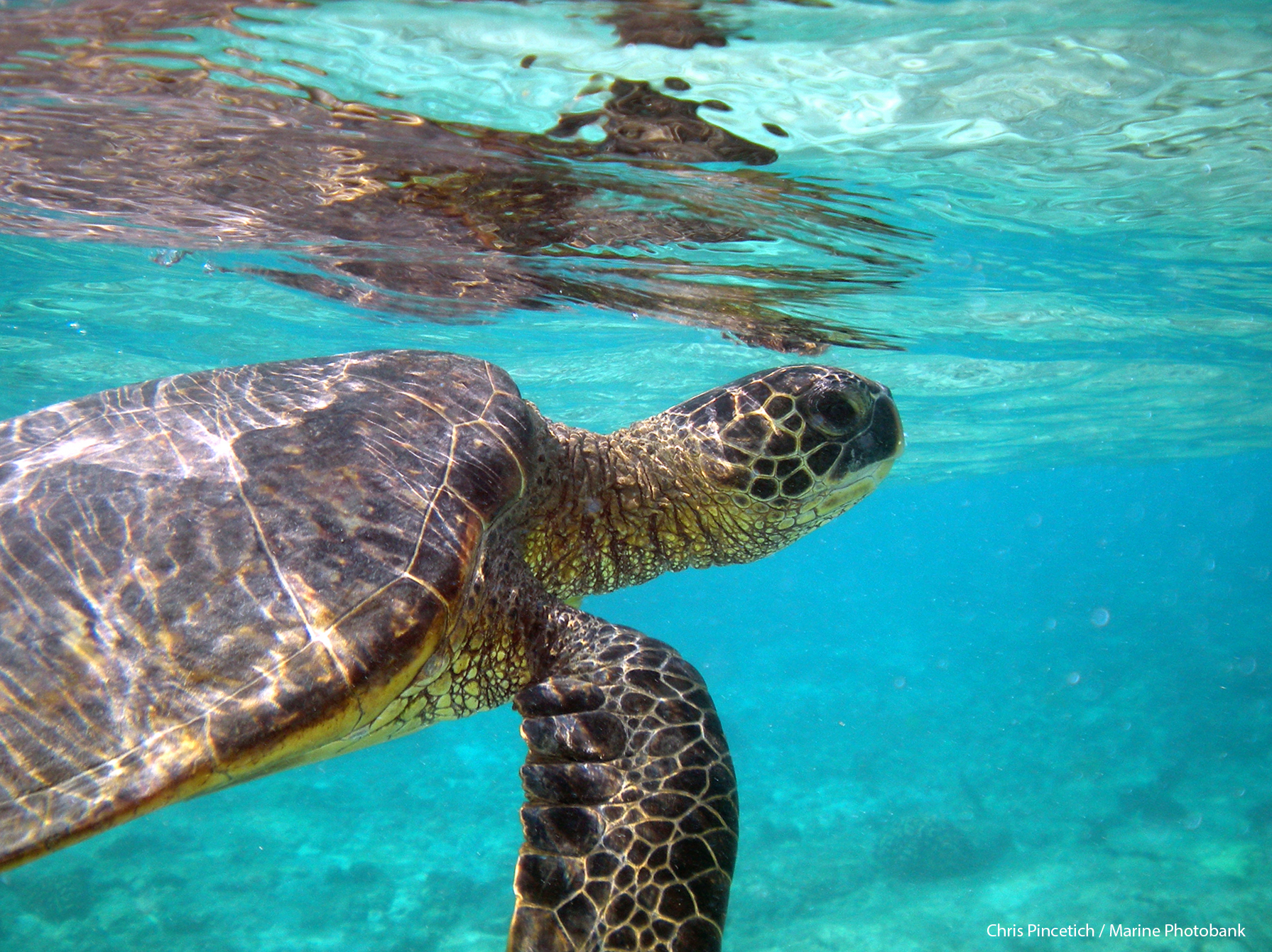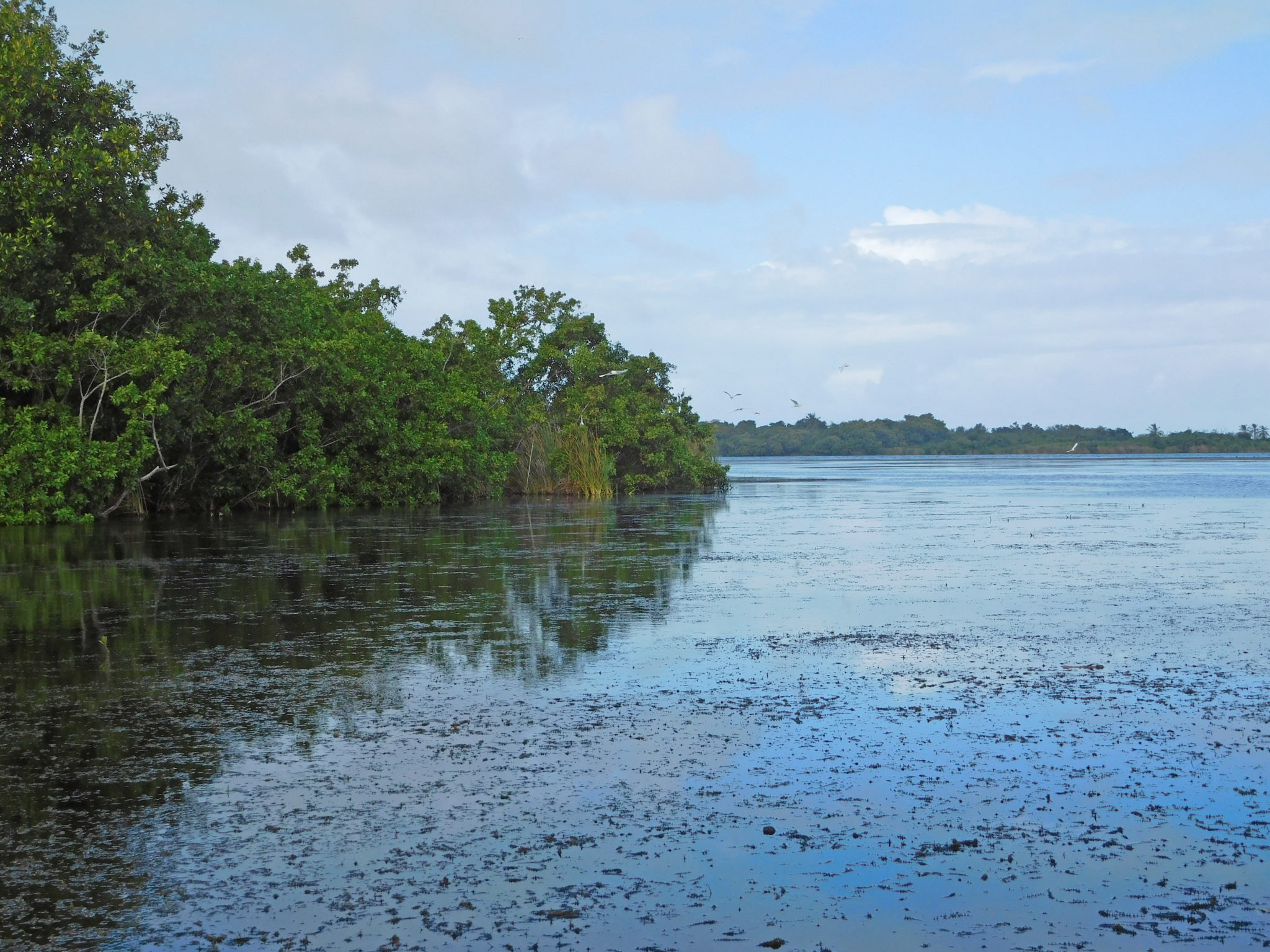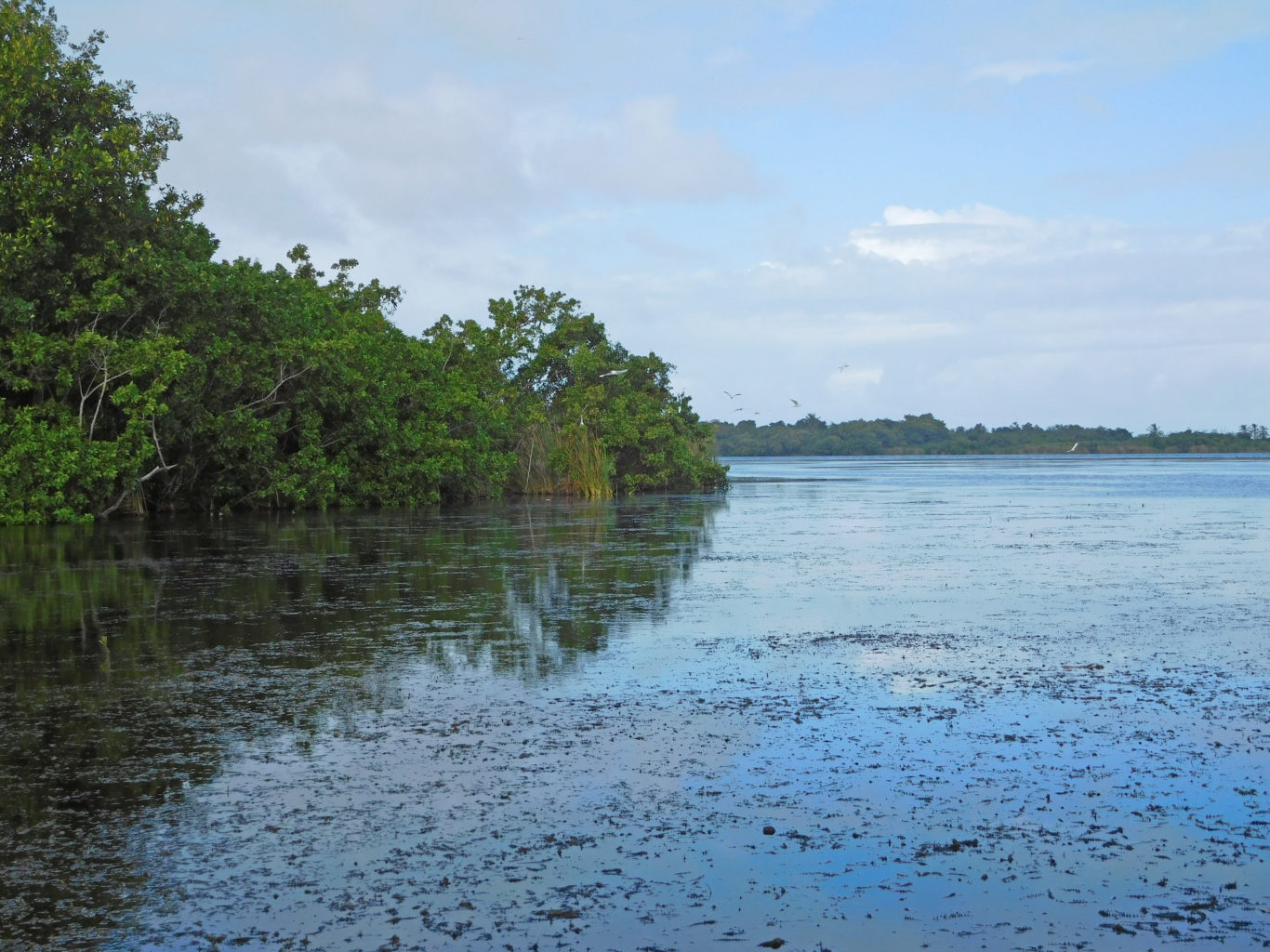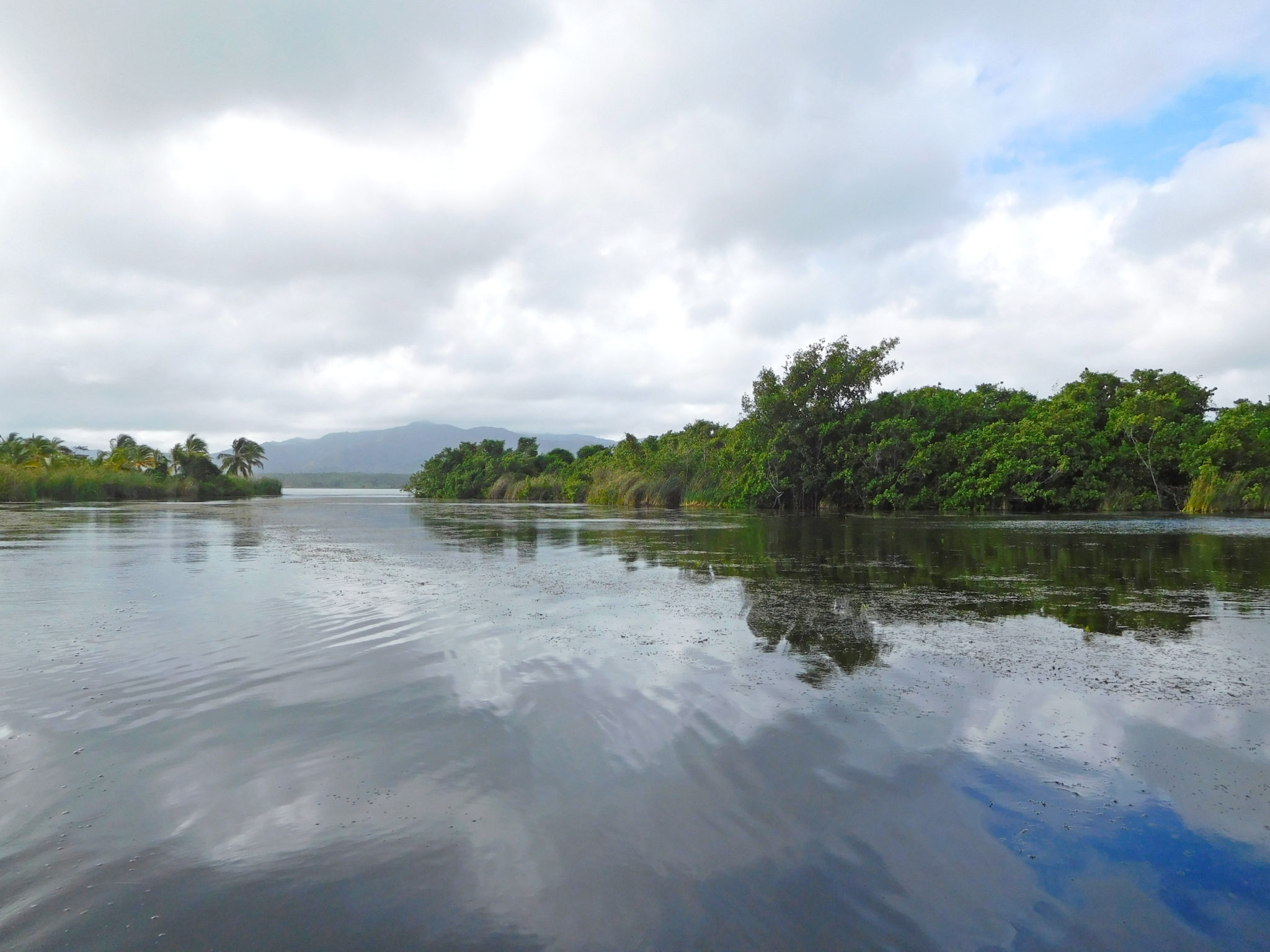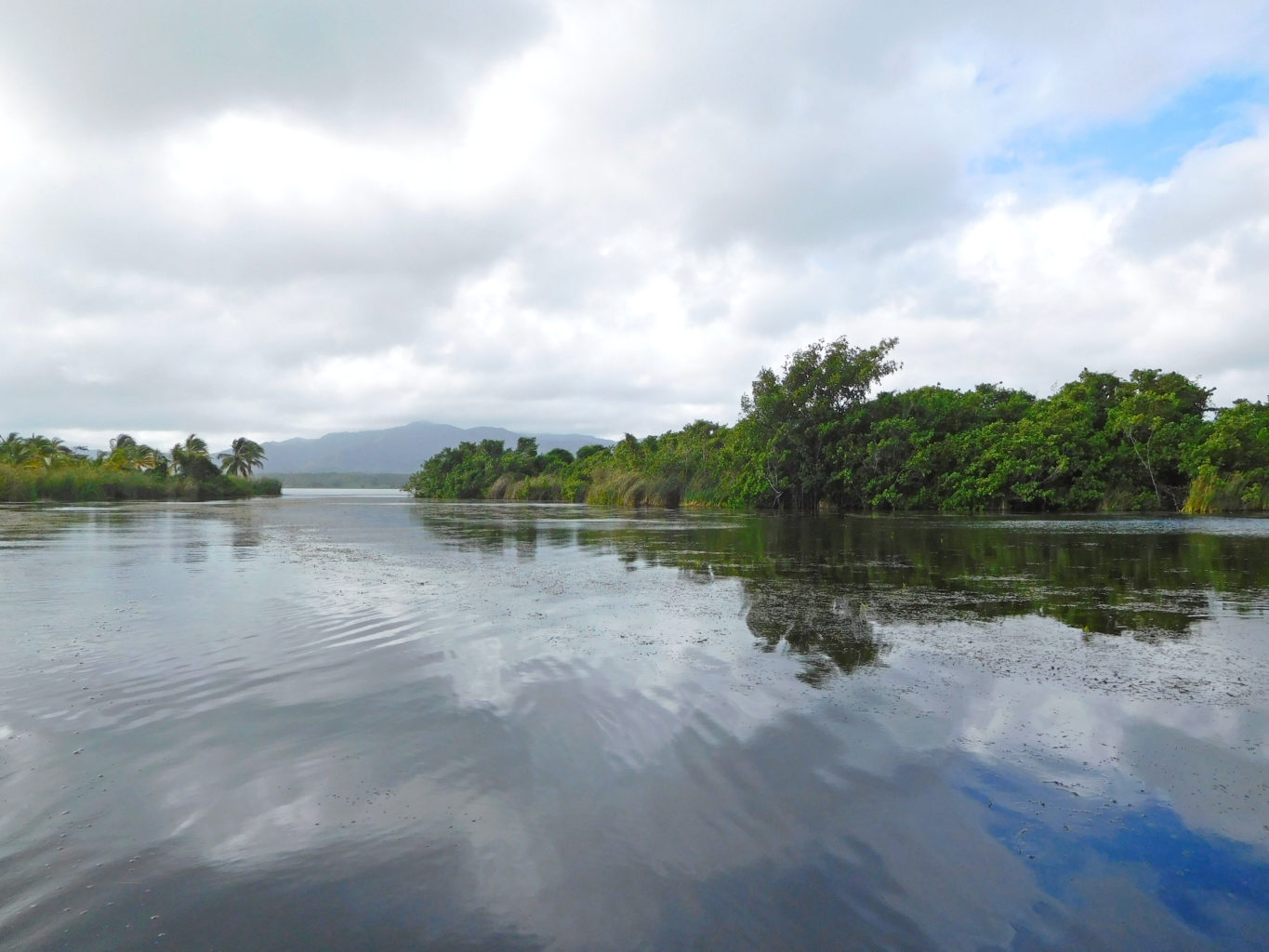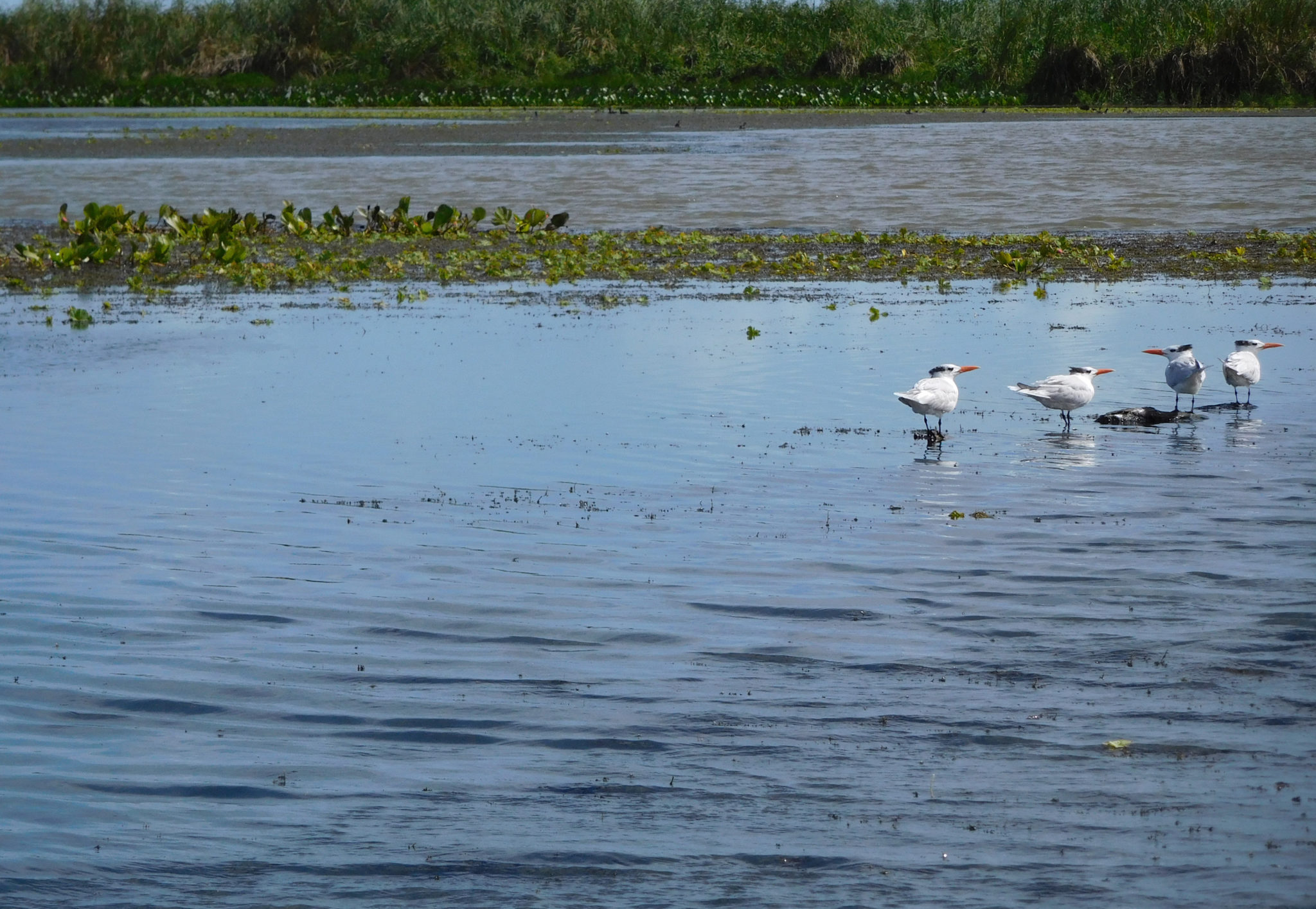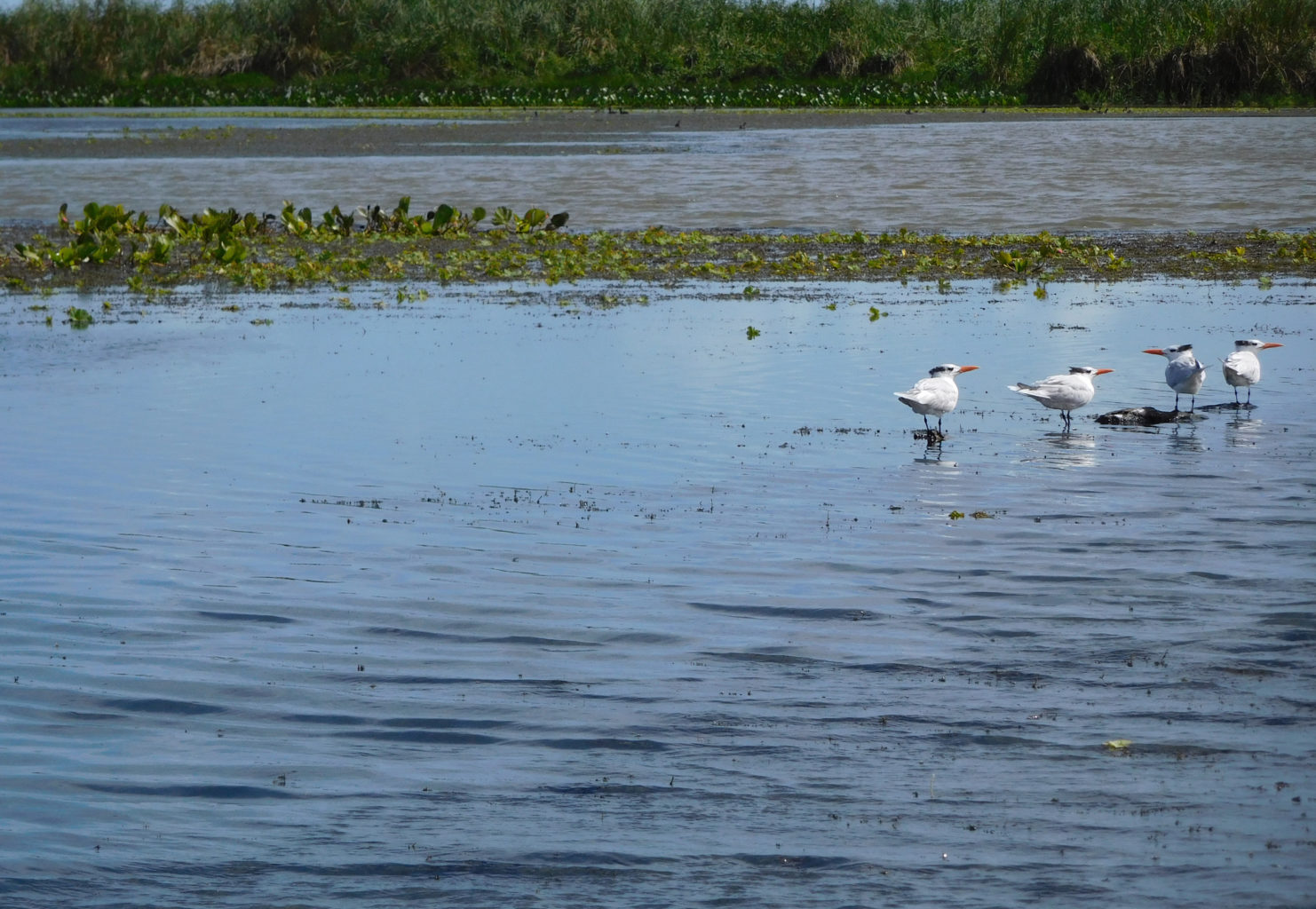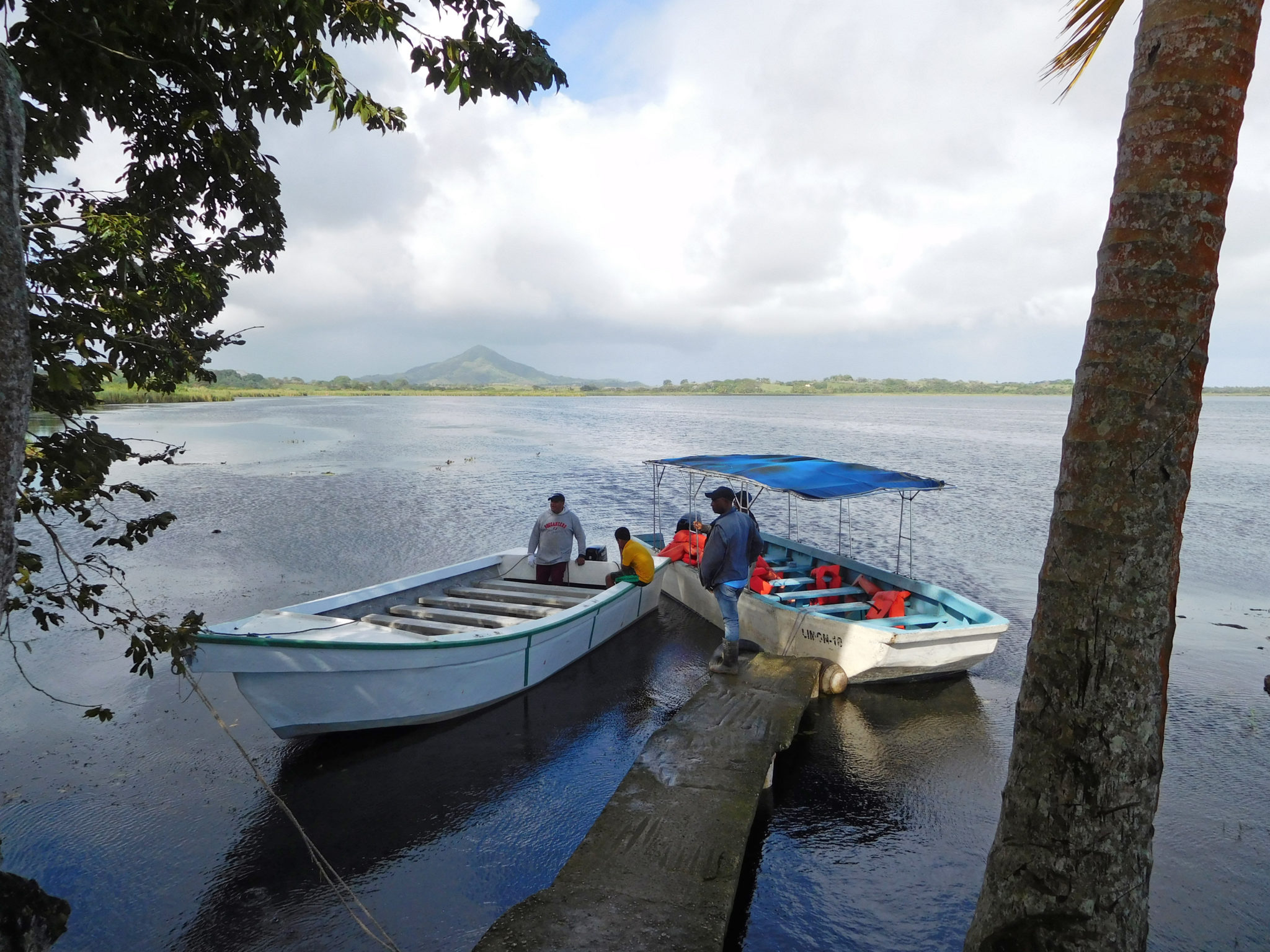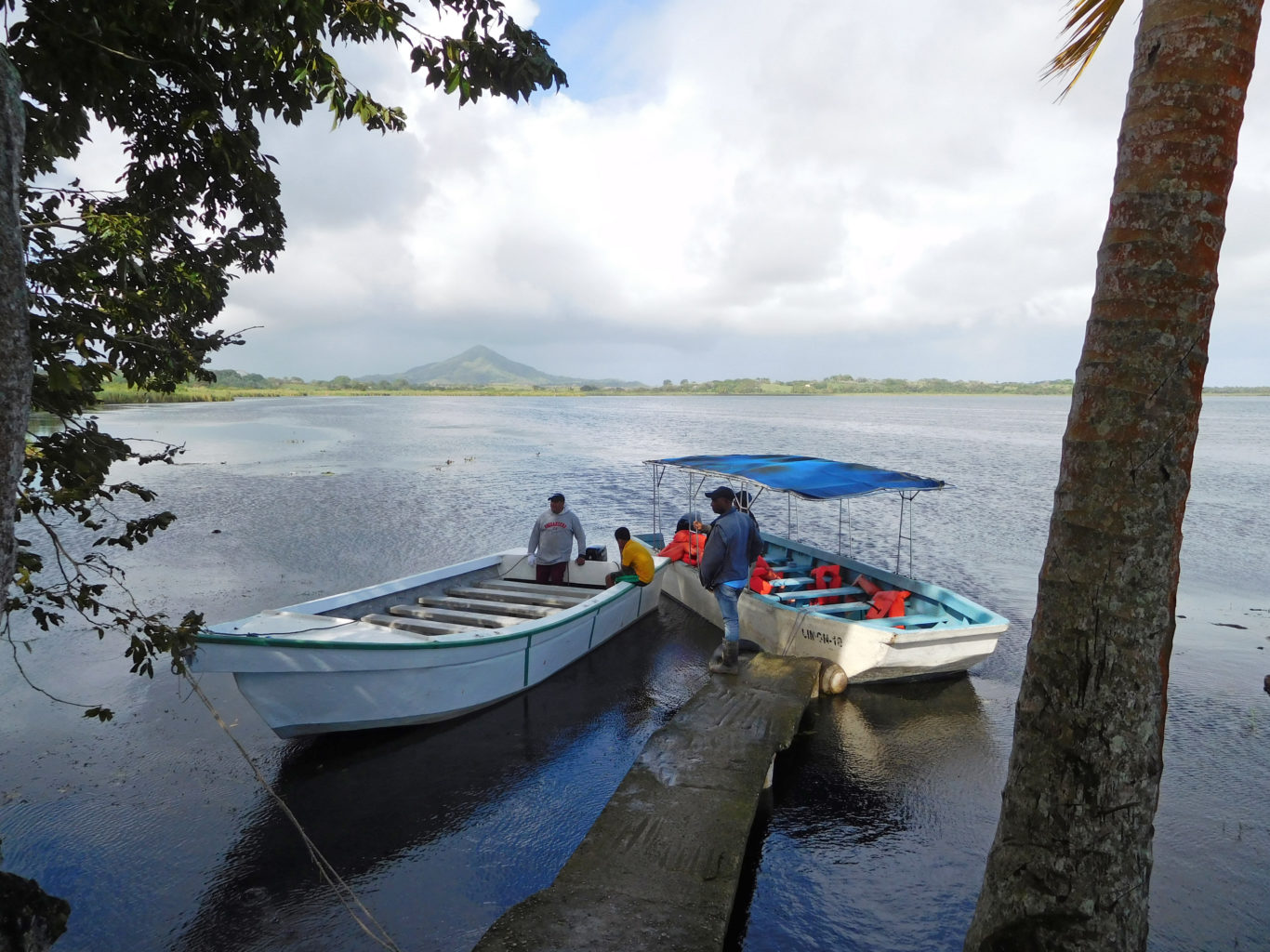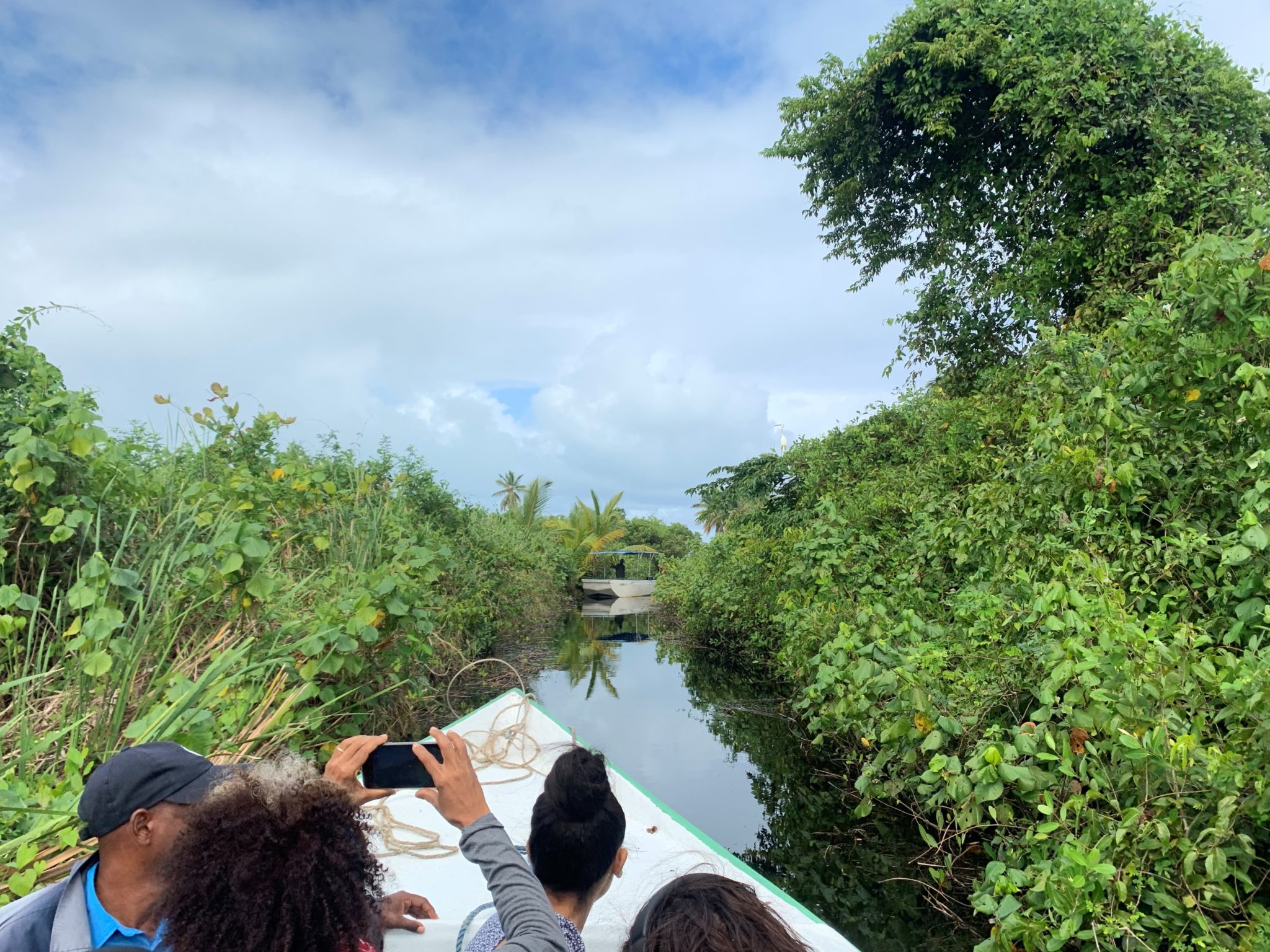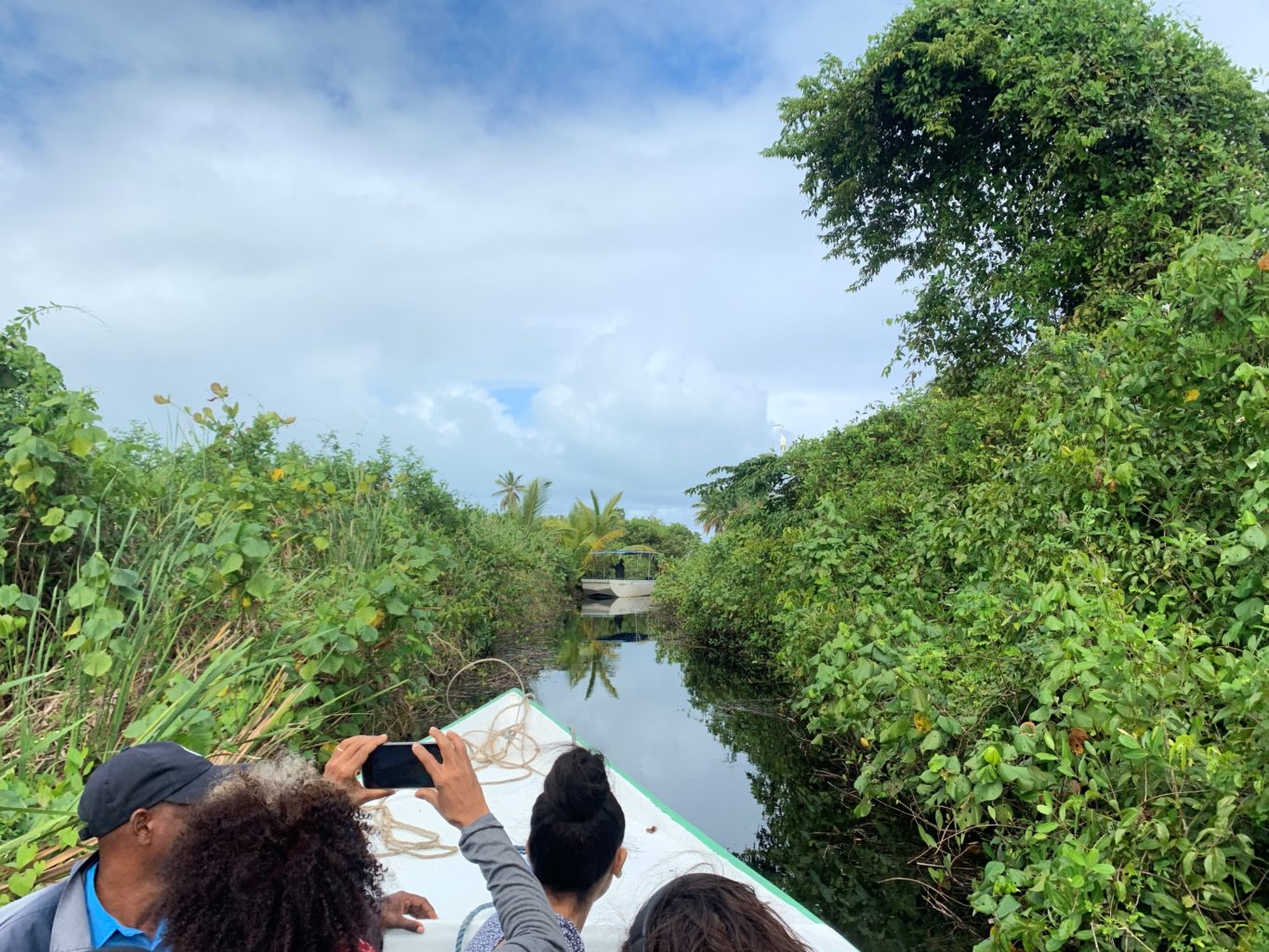El Limón Lagoon is part of a system of lagoons on the coastal plain between the Cordillera Mountains and the Atlantic Ocean. A short channel links this shallow lagoon to the ocean. It is a Wildlife Reserve, an Important Bird and Biodiversity Area, and is in the process of being declared a Ramsar wetland of international importance. However, the land nearby is mostly private, and actual protection is minimal. Around the lagoon, people fish, graze cattle, raise fish, and grow coconuts and rice.
In areas where fresh and salt water mix, there are mangroves that are critical to the health of the lagoon. Red mangrove is dominant, though there are also white, black, and button mangroves. A total of 75 species of birds (several classified as vulnerable) are found around the lagoon; five are endemic to Hispaniola. Nearby beaches are resting places for leatherback, loggerhead, and green sea turtles.
The community of Los Guineos, on the southern end of the lagoon, has a population of around 200. Many people make a living by fishing, and some have served as unofficial rangers. To increase protection of the lagoon, they have committed to eliminate the felling of mangrove and dragon trees, prevent bird poaching, and improve protection for turtles.
The community will use a Seacology grant to support ecotourism, which will generate sustainable income for locals and improve monitoring. There is some kayak tourism at Los Guineos, but the facilities – jetty, visitor waiting and resting area, and restrooms – need repairs. Local fishermen’s and tour guide organizations will lead the repair work. The Ministry of the Environment has pledged to help develop a plan for better enforcement. CEBSE, led by 2018 Seacology Prize recipient Patricia Lamelas, will be our nonprofit partner.


